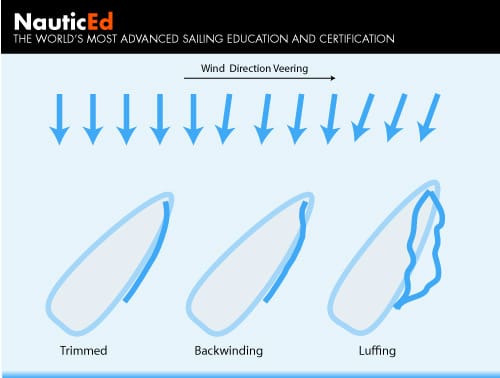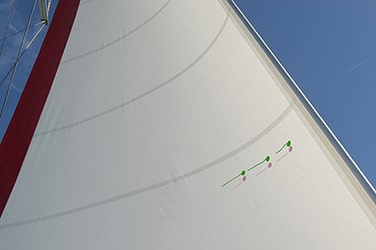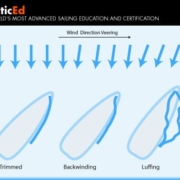Luffing and Backwinding Sails
Luffing is when the sail is flapping in the wind. It occurs when the sail has been set too far out and needs to be trimmed in. On a windy day if you held a bed sheet up in the wind it would flap wildly – that’s luffing. Luffing would occur also when the wind shifted forward towards the front of the boat. You’d hear the sails start to flap. When a sail luffs, you have two options: either bear away (steer away ) from the wind or “sheet in” (trim the sails inwards).
Back winding happens usually right before luffing occurs. It occurs right at the point where the wind is coming slightly too far forward for the current sail set. The wind becomes incident on the leading edge of the sail causing the leading edge to cave in a little. This is a very visually noticeable effect. You’re losing sail shape and thus significant lift (and heeling force). You’ll feel the boat stand up from its heel and begin to slow. Again, you have two options, either bear away from the wind or sheet in with the sails.
In the diagram below, the three side-by-side boats are seeing different wind directions due to a gust moving through. Even though they are heading in the same direction, their sails need to be set differently. For the luffing boat, it is doubtful if they could sheet in their sails enough to maintain a fully filled sail. Thus they will have to bear away from the wind. The backwinded boat may be able to sheet in a little to fill the leading edge of its sail.

Figure 2.3-1 Sailboats Trimmed, Backwinded and Luffing





